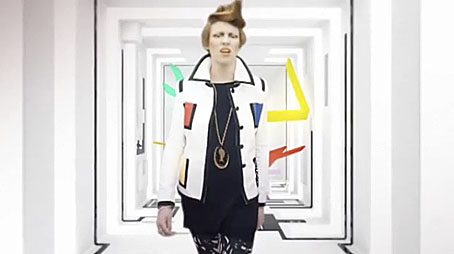Art of forgery: Fakes, mistakes and discoveries at the National
Category: {painting}
Painting
Layered Orders: Crowley’s Thoth Deck and the Tarot
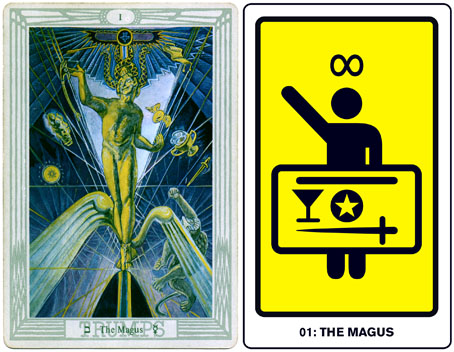
left: The Magus from the Thoth Tarot by Frieda Harris and Aleister Crowley (1938–1940?); right: The Magus from The Major Arcana by John Coulthart (2006).
Phantasmaphile presents another magickal art event in NYC next week. Layered Orders: Crowley’s Thoth Deck and the Tarot is described as “a personal narrative by Jesse Bransford”, an artist with a very distinctive approach to traditional occult symbolism. Bransford’s talk will focus on the peerless Thoth Tarot deck which Frieda Harris painted over several years under the careful direction of Aleister Crowley. The Thoth deck for me is still the ultimate Tarot deck. Crowley and Harris sought to create a Tarot for the 20th century, throwing out much of its tired and degraded iconography. This they replaced with dramatic interpretations which brought new layers of symbolism to the cards—including references to contemporary science—and also acknowledged the developments of Cubism and Futurism in the visual sphere. Tarot decks have proliferated since the 1960s but the Thoth deck has few (if any) rivals. I made use of Crowley’s controversial reordering and renaming of the cards in 2006 when I produced my set of Major Arcana designs based on international symbol signs.
The Tarot in general and Aleister Crowley’s Thoth Tarot in particular represent a miasmic confluence of image and thought into a single structure that is both liberating and overwhelming in its scope. In creating the deck, Crowley (in collaboration with painter Lady Frieda Harris) sought to integrate the mythological structures of the major mystical systems of both Western and Eastern occult traditions and to bring them into line with contemporary scientific thinking. The symbolism of the cards blends Kabbalah, Alchemy, Astrology, Egyptian mythology, quantum physics and even the I-Ching in ways that are at the same time clear and utterly confounding.
In an image-soaked personal narration Bransford, whose research-based artwork has delved into many of the territories Crowley sought to unify, will discuss some of the basic concepts of Tarot symbolism, returning to Crowley’s deck as among the most total example of the cards’ syncretism and as the most controversial.
Layered Orders: Crowley’s Thoth Deck and the Tarot takes place at Observatory, 543 Union Street, Brooklyn, NYC on Friday, July 17 at 7:30pm. Admission is free and there are further details at the Observatory website and Phantasmaphile.
Previously on { feuilleton }
• Fata Morgana: The New Female Fantasists
• Aleister Crowley on vinyl
• The Man We Want to Hang by Kenneth Anger
• The art of Cameron, 1922–1995
The art of Robert R Bliss, 1925–1981
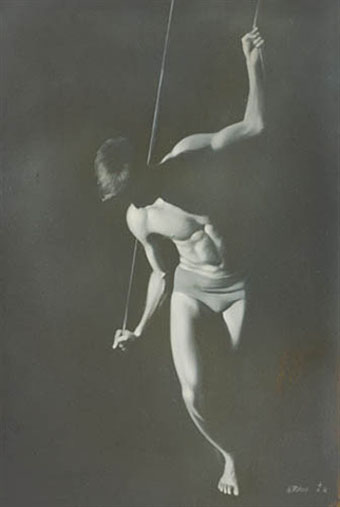
Standing boy pulling ropes (1962).
The chiaroscuro above looks like a photo print but is actually a painting. I’ve seen Bliss’s name mentioned a few times before but he remains rather difficult to track down online, most of the visible works being on auction sites. What there is consists mostly of young men in swim suits, to a degree which seems like an idée fixe given the lack of nudes or variation in the poses.
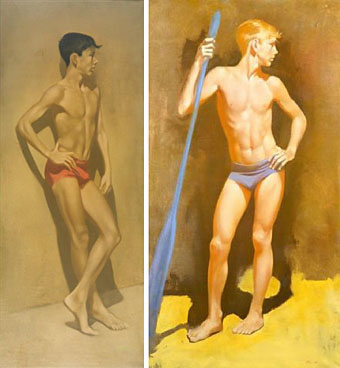
left: Standing boy with red trunks (1961); right: Boy with oar (no date).
In a career outline on the Leslie-Lohman site there’s this curious paragraph:
Bliss…after 20 years of alcoholism, discovered LSD. After that he completely stopped drinking. His work then completely shifted to colorful landscapes as well as psychedelic visionary paintings.
I’ve not been able to find any of this psychedelic work at all. If anyone knows of any, please leave a comment.
Update: Added a few more examples of his male studies.
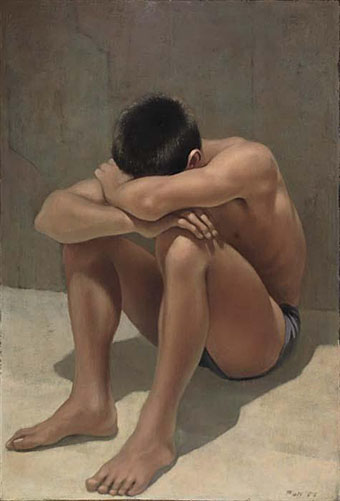
Seated Boy (1950).
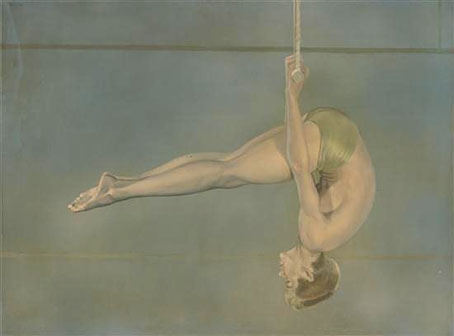
Swinging Boy (1959).
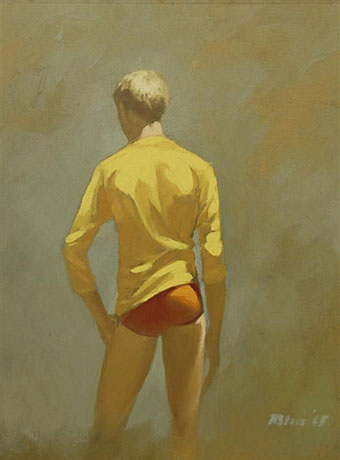
Yellow Shirt (1963).
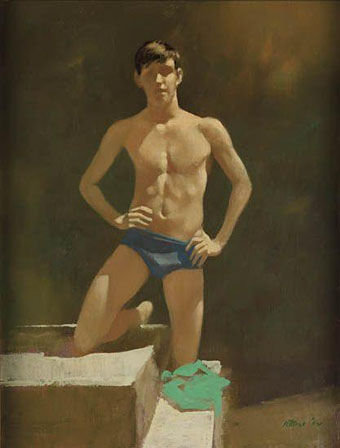
Kneeling Male Athlete (1964).
Elsewhere on { feuilleton }
• The gay artists archive
Design as virus 9: Mondrian fashions
Elly Jackson of La Roux in the recent video for Bulletproof. I’ve been enjoying La Roux’s debut album a great deal in the past week. The jacket she’s wearing is designed by Jean-Charles de Castelbajac and features the black stripes and primary colours used by Piet Mondrian (1874–1942) in his Neo-plasticist paintings of the 1920s.

